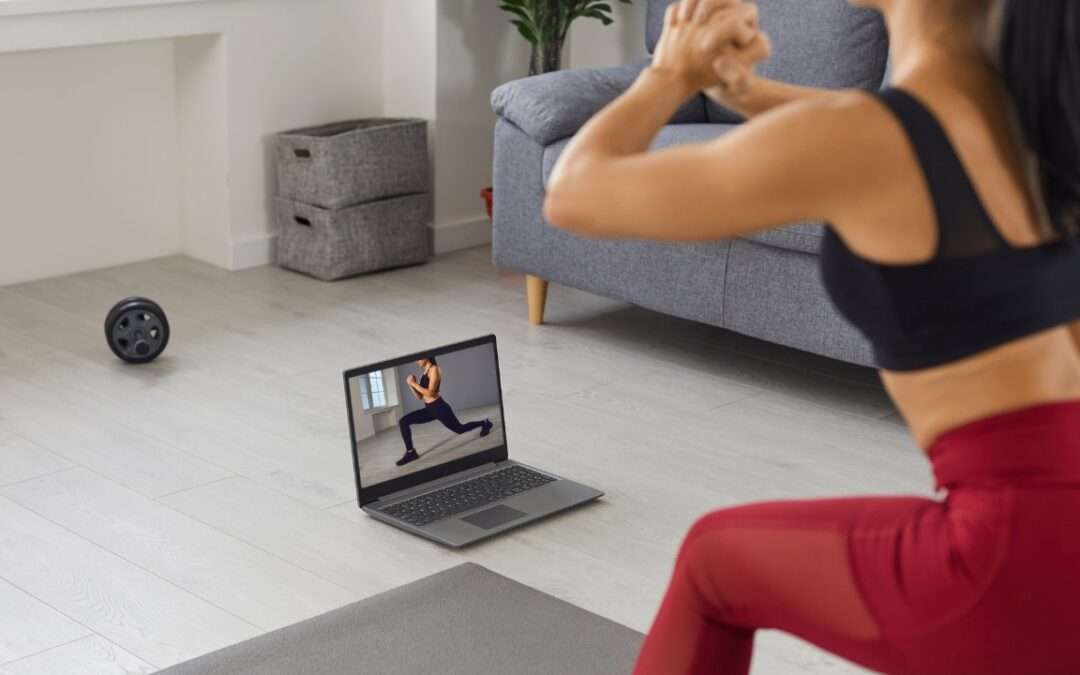
Proven Strategies to Boost Google Reviews for Your Fitness or Yoga Studio
Proven Strategies to Boost Google Reviews for Your Fitness or Yoga Studio
In today’s digital world, online reviews hold tremendous power. For fitness and yoga studios, having a strong presence on Google, with lots of positive reviews, can make all the difference when it comes to attracting new clients. People rely on reviews to decide whether to visit a business or not. If your studio lacks reviews or has negative ones, you might be losing potential clients without even realizing it.
But here’s the good news: there are plenty of effective strategies to boost your Google reviews. This blog will explore why reviews matter, the common challenges fitness and yoga studios face, and provide you with proven solutions to gather more positive reviews.
The Problem: Lack of Reviews Hurts Your Studio’s Online Presence
For most fitness or yoga studio owners, gathering Google reviews can be tough. You may offer excellent services, but getting clients to leave reviews doesn’t always come naturally. Some common problems include:
- Clients Forget to Leave Reviews: After a great workout or yoga session, clients may intend to leave a review, but they simply forget.
- Hesitation to Post Reviews: Some people are shy about leaving public reviews, or they think their opinion doesn’t matter much.
- Fear of Negative Reviews: Many business owners worry that encouraging reviews might lead to negative feedback, which could harm their reputation.
While these challenges are real, it’s important to remember that reviews are essential for your studio’s growth. Reviews build trust, improve your Google ranking, and help you stand out in a crowded fitness and wellness industry. Without enough positive reviews, your studio may struggle to attract new clients or appear higher in local search results.
The Solution: Proven Strategies to Boost Google Reviews
Your content goes here. Edit or remove this text inline or in the module Content settings. You can also style every aspect of this content in the module Design settings and even apply custom CSS to this text in the module Advanced settings.
1. Make It Easy for Clients to Leave Reviews
Problem: Clients Forget to Leave Reviews
One of the main reasons clients don’t leave reviews is that the process isn’t simple or convenient. They may forget or lose interest if they have to search for where to leave a review. The solution is to make the review process as easy as possible.
Solution: Provide Direct Links to Your Google Review Page
To simplify the process, create a direct link to your Google review page and share it with your clients. You can do this by:
-
Email Follow-Ups: After a client attends a class, send them a follow-up email thanking them for their visit and kindly asking them to leave a review. Include a clear call-to-action (CTA) with a link that takes them directly to your review page. Tools like Mindbody can help automate this process.
-
SMS Reminders: If you have your clients’ phone numbers, consider sending a polite SMS reminder with a direct link. Since people tend to check their phones frequently, this can increase the chances of receiving reviews.
-
In-Studio Prompts: Post reminders in your studio or add the review link to your studio’s marketing materials. If you run a digital sign-in system, you can also include the link on your welcome or exit page.
By making it easy for clients to leave a review right after their experience, you increase the likelihood of them doing so.

2. Ask for Reviews at the Right Time
Problem: Clients Forget to Leave Reviews
Timing is crucial when it comes to asking for reviews. If you ask clients to leave reviews at the wrong moment—such as before they’ve fully experienced your services—they might ignore your request. The key is to ask for reviews when clients are most satisfied and likely to provide positive feedback.
Solution: Request Reviews After Positive Experiences
The best time to ask for reviews is after clients have had a positive experience. For example:
-
After a Great Class: If a client just finished a high-energy fitness session or a calming yoga class, they are likely to feel great and satisfied with your service. This is an excellent time to ask for a review. Instructors can mention the request at the end of the class or when clients are checking out.
-
Upon Reaching Milestones: If a client has reached a fitness goal or completed a yoga challenge, this is a great opportunity to ask for a review. Acknowledge their achievement and ask them to share their positive journey in a Google review.
-
Personal Interactions: If you or your instructors have a positive one-on-one interaction with a client, you can personally request a review. People are more likely to respond to personal, face-to-face requests.
When clients are riding the high of a positive experience, they are more willing to take a moment to leave a glowing review.
3. Offer Incentives for Reviews
Problem: Clients Forget to Leave Reviews
Clients may enjoy your services but feel that leaving a review isn’t worth their time. Offering incentives can motivate clients to take that extra step.
Solution: Reward Clients for Leaving Reviews
You can encourage reviews by offering small rewards or incentives, such as:
-
Discounts on Future Classes: Offer clients a discount on their next class or package if they leave a review. For example, “Leave a Google review today and get 10% off your next session!”
-
Entry Into a Raffle: For every review left, clients can enter a raffle to win something exciting, such as a free class, branded merchandise, or a gift card.
-
Exclusive Access: Give clients early access to new classes or programs in exchange for a review.
Be sure to follow Google’s guidelines when offering incentives. You can encourage reviews but avoid explicitly asking for positive reviews in exchange for rewards. The idea is to motivate honest feedback that reflects the client’s experience.

4. Respond to Reviews (Both Positive and Negative)
Problem: Fear of Negative Feedback
Many fitness and yoga studios hesitate to ask for reviews because they fear getting negative feedback. However, avoiding reviews altogether can do more harm than good. Even negative reviews offer an opportunity to improve your services and show future clients that you care.
Solution: Engage With Reviews, No Matter What
Responding to all reviews—positive and negative—shows that you value client feedback and are committed to improving your services. Here’s how to handle both types:
-
Positive Reviews: Always take the time to thank clients for leaving positive reviews. Acknowledge their comments and express gratitude for their business. This encourages others to follow suit.
-
Negative Reviews: When dealing with negative reviews, stay calm and professional. Apologize if needed and offer to resolve the issue. For example, if a client was unhappy with a class, offer a free session to make up for it. Show that you’re willing to listen and improve. Potential clients will appreciate seeing that you care about your customers.
When you actively respond to reviews, you build trust and encourage more people to leave feedback.
5. Leverage Social Proof to Encourage More Reviews
Problem: Clients Don’t Know the Importance of Reviews
Some clients may not realize how important reviews are for your business. Educating them about the impact of their feedback can encourage more reviews.
Solution: Showcase the Impact of Reviews on Your Business
Use social proof to show how reviews have helped your studio grow and attract more clients. Here’s how:
-
Display Testimonials: Highlight positive reviews on your website and social media pages. This not only builds credibility but also reminds clients that their feedback is valuable.
-
Share Milestones: If you reach a milestone in the number of reviews (e.g., 100 Google reviews), celebrate it by sharing the news with your clients. This can encourage others to contribute their reviews to help you reach your next milestone.
-
Thank Your Clients Publicly: Use platforms like Instagram or Facebook to thank clients for leaving reviews. Public recognition can motivate more clients to follow suit.
Social proof works wonders for building trust and encouraging others to participate.

Benefits of Google Reviews for Your Fitness or Yoga Studio
1. Improved Google Rankings
Google reviews play a significant role in local search rankings. The more positive reviews you have, the higher your studio is likely to rank in local searches, making it easier for potential clients to find you.
2. Enhanced Credibility
Potential clients trust other people’s opinions. A business with many positive reviews appears more credible and reliable, which increases the chances of clients choosing your studio over competitors.
3. Increased Client Engagement
Reviews open up a line of communication between you and your clients. By engaging with reviews, you build stronger relationships, creating a loyal customer base.
4. Attract More Clients
When potential clients see a high volume of positive reviews, they are more likely to trust your studio and book a class. Reviews act as free word-of-mouth marketing that continues to work long after they’re posted.
Conclusion: Start Boosting Your Google Reviews Today
Google reviews are an essential part of your fitness or yoga studio’s success. They build trust, improve your online visibility, and attract more clients. By following the strategies outlined above—making it easy for clients to leave reviews, asking at the right time, offering incentives, responding to all reviews, and leveraging social proof—you can start boosting your Google reviews today.
It’s never too late to build a strong reputation online. Start encouraging more reviews and watch your studio grow!

















